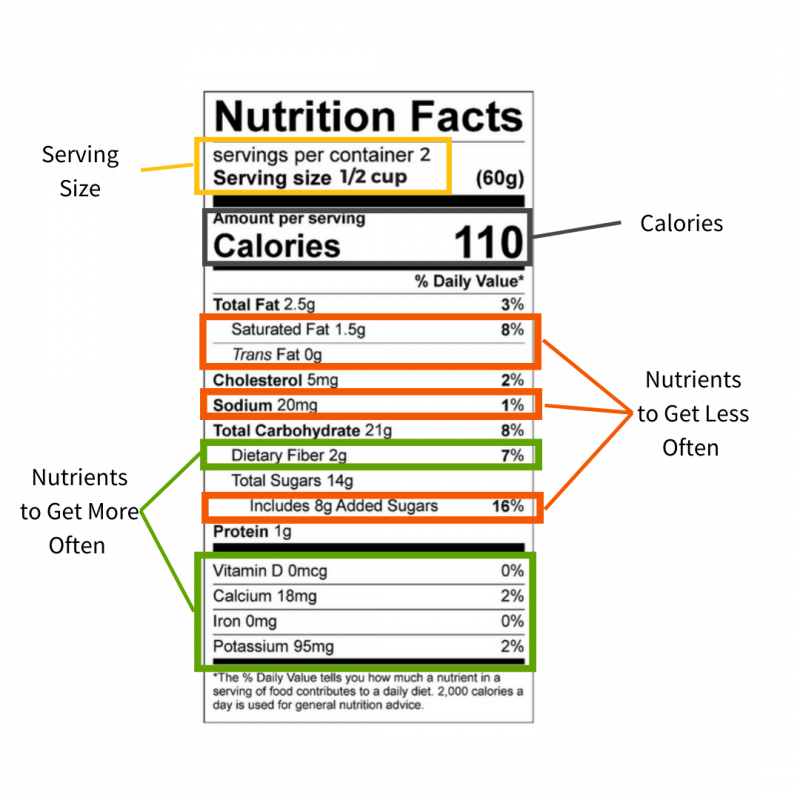
Most foods at the grocery store are required to have a Nutrition Facts label printed on the package. Using the Nutrition Facts label can be very helpful for picking the healthiest foods for your family.

How to Read Your Food Label
Look at the serving size. The numbers on the Nutrition Facts label will be based on a single serving. Sometimes a food item might look like it is meant for a single person, but will have 2 or more servings per container. It is okay if you eat more than a serving size at a time. For example, most bread will list “1 slice” as a serving, but most people will use two slices to make a sandwich.
Think about nutrients. While everyone has specific nutrient needs, thinking about nutrients in two categories can make reading a nutrition facts label much easier. There are nutrients to get more often (such as dietary fiber, vitamin D, calcium, iron and potassium), and nutrients to get less often (including added sugars, trans fat, saturated fat and sodium).
There is a simple rule you can use to see if an item is high or low in a nutrient. Take a look at the % Daily Value on the right side of the nutrition facts label. Generally, if the % Daily Value is 20% or above, the item has a high amount of that nutrient. If the % Daily Value is 5% or below, the item has a low amount of that nutrient.
Consider calories. Calories represent the amount of energy from a serving of that food item. For a healthy body weight, calories that you take in should balance with calories that you use. Choosemyplate.gov’s MyPlatePlan is a great resource for finding out your personal calorie needs. These can vary based on age, sex, physical activity level, and more.
Calories do not always tell us whether a food is “healthy” or not. A handful of nuts can be a higher-calorie food, but they’re also a great source of healthy fats, fiber, and protein. Similarly, just because something is lower in calories does not mean that it is the most nutritious choice.

